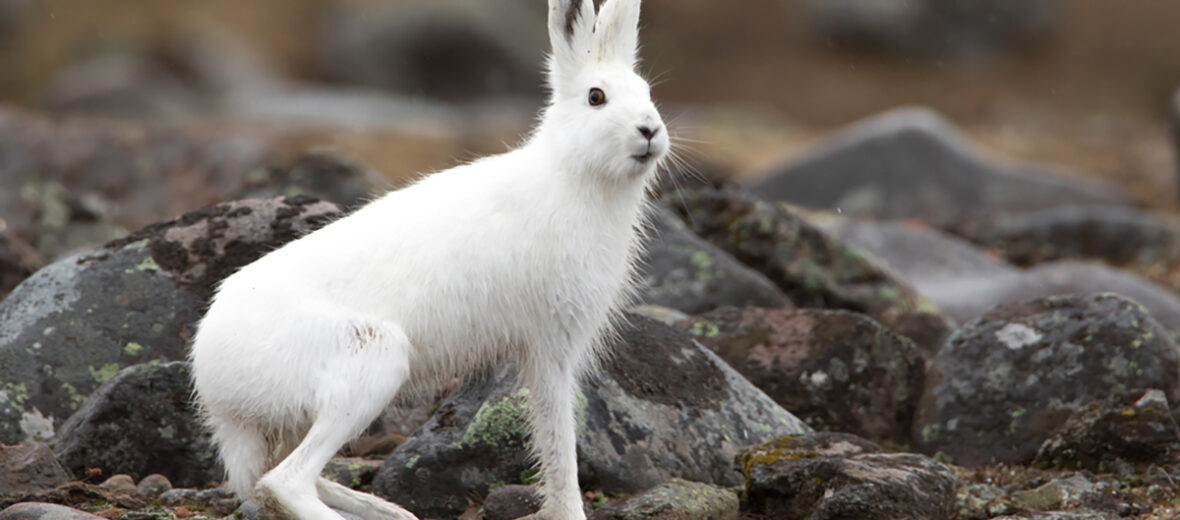
The mountain hare, aka alpine hare, blue hare, Irish hare, snow hare, tundra hare, variable hare, or white hare, hails from Europe and Asia. They prefer coastal grasslands, forests in mountain areas, lowland pastures, moors, salt marshes, tundra, taiga, and woodlands of the open steppe. So, they don’t just prefer mountains, as their name suggests. Even though these critters face the threats of invasive species, and with them disease, predation, and competition for food; habitat loss; hunting; trapping; and climate change, which effects their available food, they are abundant and listed as Least Concern by the IUCN. Their populations are currently stable.
First the Stats…
Scientific name: Lepus timidus
Weight: Up to 6.8 lbs.
Length: Up to 26 inches, plus up to a 3 inch tail
Lifespan: Up to 12 years
Now on to the Facts!
1.) Due to the downregulation of the agouti hair cycle isoform during their autumn molt, the fur coat of these critters turns grey in the winter.
2.) Mountain hares are nocturnal (active at night).
3.) These hares are social animals that gather into droves to feed and interact.
4.) Being prey animals, they are weary of predators at all times and if approached, they will flee.
5.) When escaping predators, they often move in a zigzag pattern to make it more difficult to persue.
But wait, there’s more on the mountain hare!
6.) Like other hares, they are herbivores (eat plant matter). More specifically, they are graminivores and folivores. They graze on bark, grasses, leaves, lichen, twigs, and various other plants.
7.) The nest of these hares is nothing more than a slight depression dug into the soil.
Did you know…?
These speedy hares can run at speeds of up to 40 mph!
8.) Breeding takes place from January – September.
9.) Females can produce up to 3 litters each year.
10.) Litters consist of up to 4 leverets (babies).
But wait, there’s still more on the mountain hare!
11.) Gestation (pregnancy) lasts up to 54 days.
12.) Leverets are born mostly precocial (self sufficient), fully furred, with eyes open.
Did you know…?
To help her leverets survive, the doe will constantly lick and groom her young to increase blood flow which helps keep them warm.
13.) The female, aka doe, will wean her leverets for up to 4 weeks. After which time, they are independent.
14.) Arctic hares were, at 1 time, considered a subspecies of mountain hares. However, due to closer examination, they were granted the classification of their own species.
15.) These hares don’t often drink standing water, instead, they get most of their water requirements from the food they consume, as well as from eating snow.
16.) Foxes, wildcats, dogs, stoats, golden eagles, and owls all hunt these hares.
Now a Short Mountain Hare Video!
Be sure to share & comment below! Also, check out the Critter Science YouTube channel. Videos added regularly!
Want to suggest a critter for me to write about? Let me know here.
Some source material acquired from: Wikipedia & IUCN
Photo credit: iNaturalist



